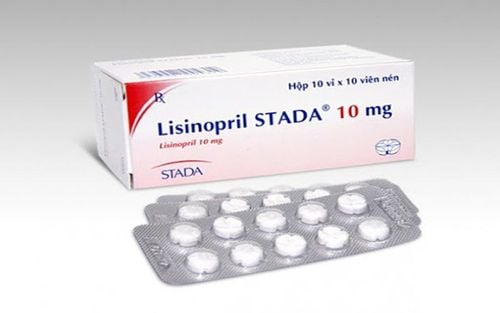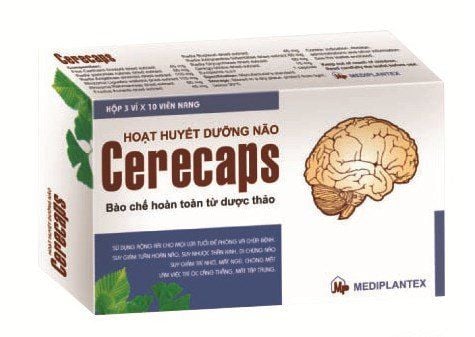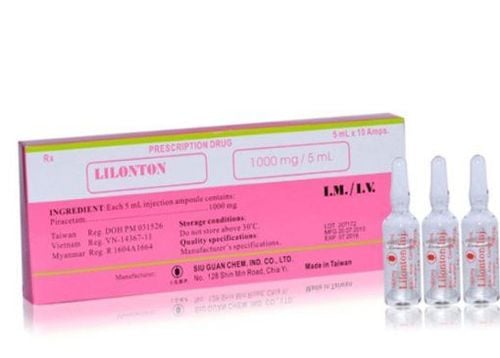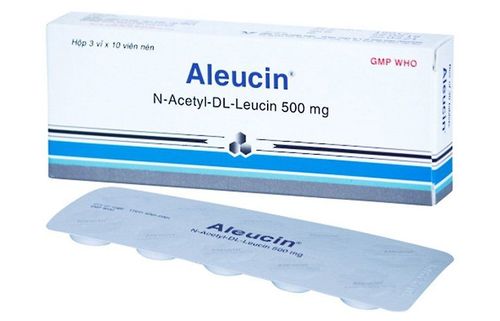This is an automatically translated article.
Dasoltac is used in the treatment of cortical tremor, cerebral ischemia, cognitive decline in the elderly, speech difficulties in young children, dizziness. The following article provides information about the uses and uses of Dasoltac.1. What is Dasoltac?
Dasoltac contains Piracetam as the main ingredient. The drug is prepared in the form of an oral solution, each tube of Dasoltac has a content of 400mg/8ml. Besides, the drug also contains some other excipients such as: Sorbitol, Acesulfam potassium, Sodium bicarbonate, hypophosphorous acid, Propyl paraben, Propylene glycol, Huong sita. Citric acid, Acid sulfite, Methyl paraben, Mau earamel.Piracetam (cyclic derivative of gamma aminobutyric acid, GABA) is a substance with euphoric effects, helping to improve the metabolism of nerve cells. However, the specific effects as well as the mechanism of action of Piracetam are still not well understood. Even the definition of "nootropic" mania remains vague. The main effect of drugs with manic effects (such as Piracetam, Aniracetam, Oxiracetam, Pramiracetam, Etiracetam, Tenilsetam, Tamitinol, Suloctidil) is to improve learning and memory. Some of these are found to be more potent than Piracetam in terms of learning and memory. It is thought that in normal people and in people with impaired function, Piracetam acts directly on the brain to increase the activity of the brain stem (the area of the brain involved in the mechanism of cognition, memory, learning, awake, conscious).
Piracetam acts on a number of neurotransmitters such as acetylcholine, dopamine, noradrenalin... This may explain the positive effect of Piracetam on learning and improving the ability to perform memory tests. Piracetam alters neurotransmitters, contributing to an improved metabolic environment for nerve cells to function properly. In vitro, piracetam is protective against ischemic metabolic disorders by increasing the brain's resistance to hypoxia. Piracetam increases glucose mobilization and utilization independent of oxygen supply, favors the pentose pathway and maintains energy synthesis in the brain. Piracetam enhances recovery from hypoxic injury by increasing inorganic phosphate cycling and reducing glucose and lactic acid accumulation. Piracetam increases the amount of ATP in the brain by increasing the conversion of ADP to ATP, which may be the mechanism that explains some of its beneficial effects. Effects on acetylcholine secretion (increasing acetylcholine release) may also contribute to Piracetam's mechanism of action. Piracetam also increases dopamine release, good effect on memory formation. Piracetam has no analgesic, sedating, or sedative effects.
2. Indications and contraindications of Dasoltac
Indications
Dasoltac is indicated in the following cases:
Seizures of cortical origin. Cerebral ischemia Cognitive decline in the elderly. Difficulty speaking in young children. Dizziness Contraindications
The use of Dasoltac is contraindicated in the following cases:
Allergy or hypersensitivity to Piracetam or any ingredient of Dasoltac. Severe renal impairment (creatinine clearance less than 20 ml/min). Severe liver failure. Huntington choreography Brain bleeding.
3. How to take Dasoltac 2g
3.1 How to use Dasoltac is taken orally, taking it right after a meal. Dosage of Dasoltac:
Treatment of cortical tremor: dose 7.2g/day (equivalent to 18 ampoules/day), orally 3 ampoules/time divided equally for 24 hours. Cerebral ischemia: dose for adults: 4 ampoules/time x 3 times/day, if symptoms improve, reduce dose 2 ampoules/time x 3 times/day. Cognitive impairment in the elderly: dose 1.2 - 2.4 g / day (corresponding to 4-6 ampoules / day) divided into 2-3 times a day, depending on the severity of symptoms. Dysphagia in young children: 50 mg/kg/day. divided into 3 times/day. Dizziness: dose 2.4 - 4.8 g/day (corresponding to 6 - 12 ampoules/day) divided into 3 - 4 times/day. 3.2 Overdose of Dasoltac and management Research shows that using very high doses of Dasoltac up to 75g/day shows no toxic effects. If symptoms of overdose occur, it is mainly supportive and symptomatic treatment, but there is no specific treatment for Piracetam.
4. Undesirable effects when using Dasoltac drug
When using Dasoltac, you may experience some of the following undesirable effects:
Whole body: common fatigue, dizziness. Gastrointestinal: abdominal distension, abdominal pain, nausea, vomiting, diarrhea. Nervous: excitability, restlessness, headache, insomnia, somnolence. Tremor, sexual arousal less common. During the use of Dasoltac, if any undesirable effects appear, you should stop using the drug and notify your doctor for timely treatment.
5. Some notes when using Dasoltac
Use caution when using Dasoltac in patients with impaired renal function. Because Piracetam is eliminated by the kidneys, the increased half-life of Piracetam is directly related to the degree of renal impairment, creatinine clearance. Monitor renal function when using Dasoltac in patients with renal impairment and the elderly. Dose adjustment of Dasoltac when creatinine clearance < 60ml/min or when blood creatinine > 1.25mg/100ml:
Creatinine clearance 40 - 60ml/min, creatinine 1.25 - 1.7 mg/100ml: Take 1/2 the usual dose.
Creatinine clearance 20 - 40 ml / min, creatinine 1.7 - 3.0 mg / 100 ml: use 1⁄2 of the normal dose.
Pregnant women: Piracetam can cross the placenta. Dasoltac should not be used by pregnant or lactating women.
6. Dasoltac drug interactions
One case of interaction between Piracetam and thyroid hormone has been reported with concomitant use: confusion and sleep disturbance, irritability.
Wafarin: Prothrombin time may be increased when Piracetam and this drug are used concurrently. With the information about Dasoltac drug, it will help the process of using and treating patients better, thereby minimizing the side effects affecting health.
Please dial HOTLINE for more information or register for an appointment HERE. Download MyVinmec app to make appointments faster and to manage your bookings easily.













